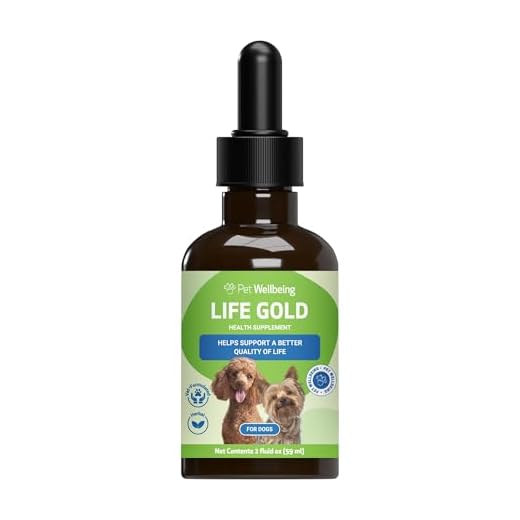






While many fungi can be harmful to our furry friends, there are specific varieties that can offer health benefits. A few types of these fungi have been embraced in the canine diet, providing nutrients that support immune function and overall well-being. It’s crucial to thoroughly research and consult with a veterinarian before introducing any new food, especially those from the fungal family.
In my experience, incorporating safe varieties of fungi can enhance my pet’s meals. For instance, shiitake and reishi are often highlighted for their potential health benefits. These types are known to contain compounds that may boost immune responses and promote a healthy digestive system. However, always ensure that the fungi are prepared properly and served in moderation to avoid any gastrointestinal upset.
When introducing new foods, including fungi, it’s wise to start with small amounts. Observe how your canine reacts over a few days. Any signs of discomfort or allergies should prompt an immediate consultation with a veterinarian. Prioritising your dog’s health means being cautious and informed, especially with unique food items.
Insights on Nutritive Fungi from Japan
While some types of wild fungi can be beneficial, caution is paramount. A few varieties popular in Japan hold potential health advantages, but not all are safe. Identifying the specific kind is crucial; several can be toxic to pets. Always consult a veterinarian before introducing any new treat into your furry companion’s diet.
Potential Benefits
Some species, such as shiitake or enoki, may offer immune-boosting properties and promote healthy digestion. These types are often included in pet supplements or food formulations, as they can enhance nutrient absorption. If you decide to incorporate these fungi, ensure they are cooked properly, as raw versions might cause gastrointestinal discomfort.
Safety Precautions
Be wary of wild-caught specimens. Incorrect identification can lead to severe health issues. Stick with commercially available options specifically made for canine consumption. Always observe your pet for any signs of allergies or adverse reactions after trying something new. If your furry friend shows any unusual behaviour, consult a veterinarian immediately.
Common Types of Japanese Fungi Safe for Canines
Shiitake stands out as a popular choice. This variety not only enhances flavour in dishes but also offers potential health benefits. Rich in polysaccharides, it may support the immune system, making it a tasty treat for your furry friend when cooked properly.
Enoki is another safe option. These delicate, long-stemmed fungi have a mild taste and can be easily incorporated into meals. They contain antioxidants and vitamins, contributing to your pet’s overall well-being.
Maitake, known for its unique texture, is safe if prepared correctly. It can aid digestion and promote a healthy gut. Adding a small amount to your dog’s food can provide variety and additional nutrients.
Shimeji can also be included in your canine’s diet. These small, clustered fungi boast a slightly nutty flavour. They are a source of fibre and protein, which can help maintain a balanced diet for your four-legged companion.
Before introducing any of these types, ensure they are cooked thoroughly and free from harmful additives. Always consult a veterinarian to avoid any adverse reactions, especially if your pet has underlying health issues.
Potential Benefits of Japanese Fungi for Canine Health
Incorporating certain types of fungi into a canine’s diet can provide a range of health advantages. These varieties have been praised for their potential to enhance immune function, support digestive health, and provide antioxidant properties.
Immune System Support
Some fungi are rich in beta-glucans, compounds known to stimulate the immune system. Regular inclusion of these in a dog’s diet may help in:
- Boosting overall immune response.
- Reducing the risk of infections.
- Fighting off chronic diseases.
Digestive Health Enhancement
Fungi can also act as prebiotics, promoting the growth of beneficial gut bacteria. This supports digestion and nutrient absorption. Benefits include:
- Improved digestion and reduced gastrointestinal issues.
- Enhanced nutrient uptake from food.
- Better stool quality and regularity.
Always consult with a veterinarian before introducing new foods into a pet’s diet, especially regarding fungi. Monitoring for any adverse reactions is essential to ensure your furry friend stays healthy and happy.
Risks Associated with Feeding Canines Japanese Fungi
Feeding canines any type of fungi can pose significant dangers, and those from Japan are no exception. Many varieties contain toxins that can lead to severe health issues. Symptoms of toxicity may include vomiting, diarrhoea, abdominal pain, and even liver failure. It’s crucial to identify the specific variety before considering any feeding.
Common Toxic Varieties
Some species found in Japan, such as the Amanita phalloides, are highly toxic and can be fatal. Even small quantities can cause serious problems. Other varieties, like the Gyromitra esculenta, can lead to neurological symptoms and gastrointestinal distress. It’s essential to avoid these altogether.
Allergic Reactions
Besides toxicity, some canines may have allergies to certain types of fungi. Symptoms may include itching, swelling, or gastrointestinal upset. If you notice any unusual behaviour after feeding them any fungi, consult a veterinarian immediately.
How to Prepare Japanese Mushrooms for Dog Consumption
Start by ensuring you have safe varieties, such as shimeji or enoki. Wash them thoroughly under running water to remove any dirt or pesticides. Cut off the tough stems and slice the caps into small, manageable pieces to prevent choking.
Next, cooking is key. Always steam or sauté the fungi lightly without adding any seasoning, oils, or butter. Cooking makes them easier to digest and removes any potential toxins that might be harmful in their raw state. Aim for a soft texture, which will be more palatable for your furry friend.
Once cooked, allow them to cool completely before serving. You can mix them into your dog’s regular food or serve them as a small treat. Monitor your pet for any signs of allergies or digestive issues after introducing this new addition to their diet.
Storing leftovers? Keep them in an airtight container in the fridge for up to three days. Always reheat gently before serving, ensuring they’re not too hot for your pup’s sensitive tongue.
Lastly, start with small portions to gauge your pet’s reaction. If all goes well, you can gradually increase the amount, but moderation is key to a balanced diet.
Signs of Mushroom Toxicity in Canines
Recognising the signs of toxicity in your furry companion is vital. If you suspect your pet has ingested harmful fungi, immediate action is necessary. Common symptoms include vomiting, diarrhoea, lethargy, and abdominal pain. Pay attention to any unusual behaviour or physical changes.
Behavioural Changes
If your canine suddenly becomes disoriented, anxious, or excessively drools, these may be indications of poisoning. Seizures or tremors are serious symptoms that require urgent veterinary intervention.
Physical Symptoms
Monitor for gastrointestinal distress, such as severe vomiting or bloody stools. Jaundice, indicated by yellowing of the gums or eyes, is another alarming symptom. If you notice laboured breathing or a rapid heartbeat, seek veterinary care immediately.
| Symptom | Possible Severity |
|---|---|
| Vomiting | Moderate |
| Diarrhoea | Moderate |
| Lethargy | Severe |
| Seizures | Critical |
| Jaundice | Critical |
Always consult a veterinarian if you suspect ingestion of harmful varieties. Quick action can save your pet’s life.
Consulting a Veterinarian About Canine Diets
Always seek the guidance of a vet when considering dietary changes, especially with unfamiliar food items. A professional can provide tailored advice based on your canine’s health, breed, and any specific dietary needs. Regular check-ups are crucial to ensure your pet remains in optimal health.
Importance of Professional Guidance
During my journey with my furry friend, I learned that not all foods suit every animal. I once thought a trendy ingredient was safe and beneficial, but my vet highlighted potential concerns. This experience reinforced the significance of consulting a vet before introducing new foods. They can recommend the best dog food for sensitive skin french bulldog or other suitable options tailored to your companion’s unique requirements.
Questions to Ask Your Vet
When discussing diet, prepare questions regarding specific ingredients, potential allergens, and the nutritional balance of meals. It’s also wise to inquire about any specific health conditions that could affect dietary choices. Your vet’s insights can help avoid unnecessary risks and ensure your pet thrives.
Alternatives to Japanese Mushrooms for Dog Nutrition
Consider incorporating these nutritious options into your canine’s diet instead of opting for exotic fungi:
- Carrots: Crunchy and sweet, they are low in calories and high in fibre, promoting dental health while providing vitamins A and C.
- Sweet Potatoes: Packed with vitamins and antioxidants, they are a great source of carbohydrates and can be served cooked and mashed.
- Green Beans: These are low in calories and high in fibre, making them a fantastic snack that can help with weight management.
- Pumpkin: A digestive aid rich in fibre and beta-carotene, it’s excellent for maintaining a healthy gut.
- Blueberries: These tiny fruits are loaded with antioxidants and vitamins C and K, and they can be a delightful treat or added to meals.
Before introducing new foods, ensure they are safe and suitable for your pet. Moderation is key. Always watch for any adverse reactions when trying new items.
In addition, consider consulting with your veterinarian about specific dietary needs. They can provide tailored advice based on your dog’s health, age, and activity level.
With a variety of wholesome options available, you can support your furry friend’s health while keeping mealtime interesting and enjoyable!






